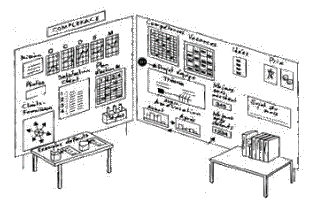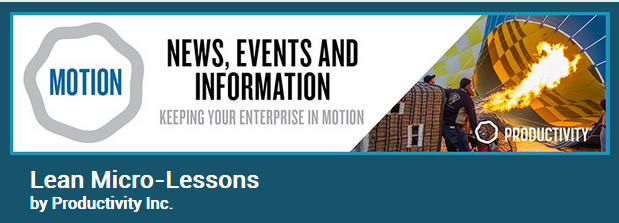
As part of your lean initiative, it is important to develop a system for visually organizing the workplace to create a common language that allows all employees to identify process abnormalities and make improvements.
Creating visual standards for process flows allows natural work teams to monitor progress hourly, daily, weekly, monthly – so they can organize their time to respond to fluctuation in customer demand and staff accordingly. They can also gauge progress against targets and immediately see problems which can be addressed before negatively impacting customers. This is especially important for service organizations where connections to the customer are closer than they are in a manufacturing environment.
In addition to overall process improvement, visual standards make everyone’s work easier while promoting knowledge sharing and skill development.
Tips for Creating Visual Boards:
Divide your visual board into 4 main elements and think in terms of information you need to know to better perform your duties and information you need to share so that you and your team can be more effective.
- Flows/Activities
➤connect progress of product throughput to plan, outline daily, weekly, monthly activities, who is responsible, issues, etc. - People
➤include information on team members, vacation planning, skill matrix, cross training planning, etc. - Performance
➤track key leading and lagging indicators — customer demand rate, hourly/daily production targets vs. actuals, # of breakdowns, changeover times, quality, safety incidents, key indicator trends, etc. - Problem Solving
➤Monitor all continuous improvement actions, trouble-shooting activities, and A3 problem solving efforts
Visual Systems work with Standard Work
The key to making it all work for your organization is the integration of your visual boards with leader standard work routines. Once completed, your boards will provide a nice display of information, however on their own, will not make an impact on the organization. To transition your boards from a passive display to information hub requires leaders at all levels to actively engage with them and the shop floor teams that created them.
Be certain they become a regular stop on your Gemba walks and ensure leaders use the information for teachable moments. Regular reviews by leaders up and down the organizational hierarchy will connect activities and organizational goals thus ensuring leadership aspirations are directly aligned with daily work. The result will be dramatic improvement in customer response time, productivity and employee satisfaction.
